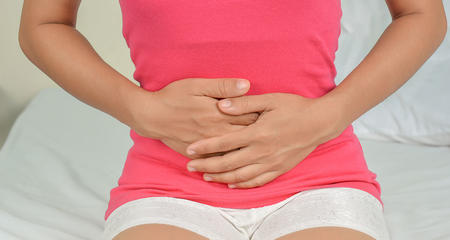-
Why is multidisciplinary care important?
Medical College of Wisconsin physicians in the Women’s Incontinence and Sexual Health Program are trained to diagnose and treat a wide range of female urologic and sexual health issues. Urogynecologists, female urologists and a female sexual health expert work as a team to offer comprehensive care. Other team members — a physical therapist, registered nurses, a physician assistant, a psychologist and a nurse practitioner — are also based in the clinic. To facilitate care, women who experience more than one type of health issue are referred to other specialists within the Women’s Incontinence and Sexual Health Program or to other programs at Froedtert & the Medical College.
-
What is incontinence and how common is it?
Urinary incontinence is an involuntary leakage of urine from the bladder. About 30 percent of American women suffer from urinary incontinence at some point in their lives. Fecal incontinence — the inability to control bowel movements — occurs in 5 percent of women. Incontinence is not an inevitable part of aging, nor does it have to be accepted as a long-term consequence of giving birth.
-
What are the types and causes of incontinence?
There are many forms of incontinence, including:
-
Stress incontinence — a condition in which urine escapes when the abdomen is under stress, such as when coughing or laughing. This is caused by weakening of the bladder sphincter muscles that control urination. The muscles may be weakened as a result of pregnancy, weight gain or other conditions that stretch the muscles. The muscles no longer support the bladder properly, and leakage occurs during stressful activities such as coughing, sneezing, laughing, exercising, lifting and other kinds activities.
Urge incontinence — the sudden overwhelming urge to urinate. This may be caused by infections, constipation, a loss of muscle control (due to age-related changes in the bladder, strokes or spinal cord injury), tumors that put pressure on the bladder, dementia and diseases that affect the nervous system. A woman may feel she can’t reach the bathroom fast enough. Larger amounts of urine may be leaked than in stress incontinence.
Mixed incontinence — both stress and urge incontinence are experienced at different times.
Overflow incontinence — leakage that occurs when the amount of urine produced exceeds the bladder's capacity to hold it. This occurs as a consequence of failing to empty the bladder.
Transient incontinence — temporary urine leakage caused by an infection or certain medications.
Fecal incontinence — the inability to control bowel movements, causing stool (feces) to leak unexpectedly from the rectum -
How can incontinence be treated?
A treatment plan is provided for all women with urinary or fecal incontinence. Treatment may include behavioral changes, (e.g., diet modification, reducing caffeine or alcohol intake, avoiding liquids at bedtime, changing medications), biofeedback, medications, pelvic floor exercises and surgery. In many cases, incontinence can be managed. Certain devices, such as pessaries, can also be used to treat incontinence.
-
What are pelvic floor disorders?
The pelvic floor is a network of muscles, ligaments and tissue that support the organs of the pelvis — the bladder, uterus and rectum. It also plays a role in maintaining continence. Pelvic floor disorders involve a dropping down (prolapse) of the bladder or uterus caused by weakness of or injury to the ligaments, connective tissue and muscles of the pelvis. Pelvic floor disorders, which occur only in women, are more common among women who have had vaginal deliveries, which may damage nerves and lead to muscle weakness.
-
What is pelvic organ prolapse?
Pelvic organ prolapse is a type of pelvic floor disorder that occurs when the tissues that normally support the pelvic organs become stretched or damaged, allowing organs to drop and press against the wall of the vagina. About 80 percent to 90 percent of women with pelvic organ prolapse have had a vaginal birth. Women with pelvic organ prolapse may experience urinary incontinence, a feeling of fullness or heaviness in the pelvic area, low back pain, pain during intercourse or problems with bowel movements. Pelvic organ prolapse is diagnosed by a physical examination.
-
What are the symptoms of pelvic organ prolapse?
Most women with pelvic organ prolapse do not have any symptoms. Among those who do, symptoms may include uncomfortable pelvic pressure and difficulty urinating or defecating.
-
What causes pelvic organ prolapse?
This is primarily related to childbirth, which can damage the pelvic floor, damage nerves and stretch the uterus. Other causes may include genetics, lifting heavy objects, chronic coughing and smoking.
-
How can pelvic organ prolapse be treated?
For many women, no treatment is needed. Some women may benefit from a pessary, a device placed in the vagina to support areas of pelvic organ prolapse (the pessary is removable). About 11% of women with pelvic organ prolapse have surgery to increase the support of the uterus and vagina. This surgery, usually performed through the vagina, may also involve a hysterectomy for some women.
-
What are voiding function disorders?
Voiding disorders are those that affect urine storage or release, resulting in incontinence (an involuntary leakage of urine) or incomplete emptying of urine from the bladder (urine retention).
-
What are neurogenic bladder disorders?
These are disorders involving the loss of normal bladder function caused by damage to part of the nervous system (such as stroke, multiple sclerosis, Parkinson’s disease or other disorder). The damage can cause the bladder to be underactive, in which it is unable to contract and empty completely, or it can be overactive, in which it contracts too quickly or too often.
-
What are urogenital fistulae?
A fistula is an abnormal duct or passage between organs or vessels that normally do not connect. A urogenital fistula is an opening into the urinary tract. One type of female fistula is a vesicovaginal fistula, an abnormal tract between the bladder and the vagina. This fistula causes a continuous, involuntary discharge of urine into the vagina. Prolonged labor during childbirth is often the cause of a vesicovaginal fistula.
-
What are genitourinary tract disorders?
Genitourinary disease involves disorders of the genital and urinary organs, including internal genitalia (ovaries, vagina and uterus), external genitalia (labia, vulva and clitoris), kidneys, bladder, ureters and urethra.
-
What are the types of sexual health issues?
There are four general types of female sexual health issues:
-
Low libido — a lack of sexual desire or interest in sex
Arousal/lubrication problems — an inability to become physically aroused during sexual activity, or persistent genital arousal that interferes with daily activities
Orgasm disorders — the delay or absence of sexual climax (orgasm)
Sexual pain disorders — pain during intercourse (vestibulitis, vulvodynia)Female sexual dysfunction can be distressing to the patient and to her partner and can put stress on their relationship.
-
How common are sexual health issues among women?
Between 25 percent and 50 percent of women suffer from some form of sexual dysfunction at some point in their life. The most common sexual complaint is hypoactive sexual desire disorder or low libido, which, in some studies, up to 63 percent of women experience during their life. One-third of women suffer from arousal disorder and another one-third of women have orgasmic problems. Sexual pain disorders such as vulvodynia, vestibulitis and pelvic floor disorders can occur in 20 percent of women. More often, women have a combination of sexual health issues.
-
What causes sexual health issues?
Sexual health issues may be caused by physical and/or psychological factors. These problems may be a result of aging, medication, menopause, other medical problems, surgeries or psychological issues. Physical problems such as cardiovascular disease, high blood pressure or diabetes can play a role in a woman’s sexual health. There also may be hormonal causes, including hormone levels associated with childbirth and menopause, for sexual disorders. Psychological factors may include depression, relationship problems or cultural issues. The staff of the Women’s Incontinence and Sexual Health Program includes a urologist and a psychologist to diagnose and treat all of the underlying reasons for sexual health issues.
-
How can sexual health issues be treated?
The Women’s Incontinence and Sexual Health Program treats the whole woman — body and mind. If appropriate, a woman’s partner is included in treatment. Staff members evaluate physical and psychological causes of sexual health issues. An initial evaluation will also rule out a more serious disease that could contribute to a sexual health problem. Treatments may include lifestyle changes (diet, exercise and alcohol use), treating an underlying medical or hormonal condition, medication and counseling to address emotional and relationship issues.
-
Are Froedtert & MCW specialists involved in research trials for women’s sexual health, incontinence, pelvic prolapse or other related disorders?
Yes. A number of clinical research studies are conducted for various women’s health issues. If you are interested in learning more, please talk to your physician.
Virtual Visits Are Available
Safe and convenient virtual visits by video let you get the care you need via a mobile device, tablet or computer wherever you are. We'll assess your condition and develop a treatment plan right away. To schedule a virtual visit, call 414-777-7700.
More to Explore



